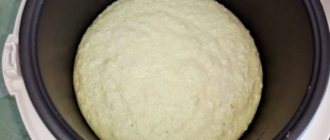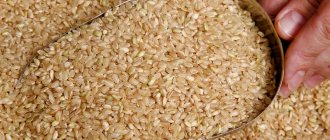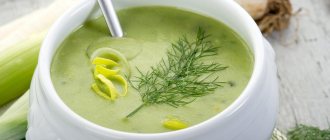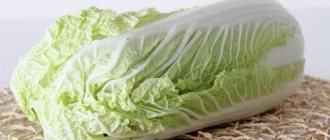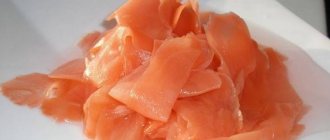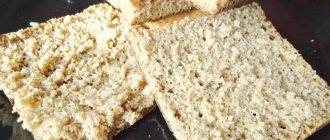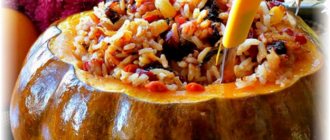Jelly with pectin - both tasty and healthy
Well, the question of the benefits of jelly and the need to use it is something that few people ask.
Most people don’t eat it often, because preparing natural jelly with pectin takes time, but few people want to buy store-bought stuff in bags, seeing the long list of all kinds of artificial additives and flavor enhancers. I think that many of you remember how, in childhood, our mothers and grandmothers conjured a small portion of jelly - boiled berries, soaked the gelatin, filtered it and poured it into bowls. In general, the process is labor-intensive, and the output is minimal, eaten in a matter of minutes. We have long been accustomed to the fact that, as a rule, ordinary gelatin is used as a gelling base. Sometimes agar-agar is used, but it is difficult to digest and leads to bowel movements. Much more beneficial is pectin, which is distinguished by its ability to massage and cleanse the intestines of waste products from the body. In addition, it helps remove heavy metal salts from the body.
What conclusions can be drawn from all of the above? Of course, if you prepare jelly, it is better to use pectin for this, combining the taste and benefits of the prepared dish.
Usually, when hearing the word “jelly”, many people have associations with a dish made from fruit juice. But traditional jellied meat is also jelly, only prepared on the basis of animal products. There are also milk, fish and even tea jelly.
We will offer you several recipes for jelly using pectin so that you can get a powerful dose of vitamins, a boost of energy, benefit your body and prepare it in a matter of minutes.
General information
Pectin is found in the cellular tissues of plants and keeps them elastic, dense, helps ripened fruits and berries remain firm for some time and keep their shape during storage. When the fruit becomes overripe, the pectin in it breaks down into simple sugars, which are completely water-soluble. As a result, overripe fruits become soft and begin to deform.
Hard fruits contain the most pectin. Fruits and berries high in pectin can be made into jam or jelly without sugar or strong boiling.
But not all fruits have enough of this natural substance to make jam, jam or jelly - some will require either longer cooking time or additional pectin.
Table of pectin and acid content in fruits and berries
The pectin structure binds effectively to water in an acidic environment. Sugar increases the gelling ability of pectin and also affects the texture and consistency of jellies and jams as they cool and set. That is, to activate thickening you will need a high sugar content and some acids, such as citric acid.
Acid is a thickening catalyst and significantly shortens the reaction time. Pectin works without it, it will just take much longer to harden.
The level of pectin and acid in fruits and berries commonly used for making jam can be divided into three groups:
- Group I: If the fruit is not overripe, it has enough natural pectin and acid to form a gel-like texture when only sugar is added.
- Group II: Low levels of natural acid or pectin, supplementation may be required.
- Group III: Addition of acid or pectin or both is always required.
The concentration of pectin varies depending on the type of fruit and ripeness.
List of foods with different levels of pectin
| Group I | Group II | Group III |
| Lots of pectin | Low pectin levels | Very little or almost no pectin |
| Apples | Overripe apples | Apricots |
| Blackberry | Overripe blackberries | Blueberry |
| Citrus peel* see note | Cherry | Overripe cherry |
| Wild apples | Bird cherry | Figs |
| Cranberry | Elder | Blueberry |
| Currant | Raspberries** see note below | Peaches |
| Gooseberry | Nectarines | |
| Grape | Pears | |
| Quince | Grenades | |
| Plums | Strawberry |
* Oranges, tangerines, grapefruits, lemons, limes, etc. - there is a lot of pectin in the peel, but little in the pulp.
**Raspberries are always identified by researchers as being low in pectin, but many home cooks have found that they often act as if they have high levels of this substance.
Fruits low in pectin must usually be combined with fruits high in pectin to make a good jelly. Also, during cooking, store-bought or homemade pectin is additionally added to compensate for its low level or speed up the process.
Gelatin and pectin - what's the difference? Comparison
Gelatin and pectin both create clear gels, but they are completely different products.
The main difference is that pectin is a water-soluble fiber obtained from red seaweed, and gelatin is a protein obtained from animal skins, bones, tendons, and cartilage.
- Pectin is used almost exclusively in high sugar foods such as jams.
- Gelatin is used in a much wider variety of products, including mousses, marshmallows and frostings, because it sets in a cool environment and does not require the inclusion of specific ingredients to activate it.
Recipes for jelly with pectin:
1. Redcurrant jelly
- currant berries - 500g,
- sugar – 100g,
- pectin – 25g
- Prepare red currant puree using a blender or mixer.
- Add a little water and cook for 5 minutes.
- Strain the finished compote through a sieve.
- Dilute sugar and pectin in the prepared broth.
- Cook for another 5 minutes, stirring constantly.
- Pour the finished jelly into bowls.
2. Jelly with honey and parsley
Ingredients:
- water – 500ml,
- honey – 500ml,
- apple cider vinegar – 100ml,
- chopped parsley – 10 tbsp.,
- pectin – 80g
- Bring water to a boil and add chopped parsley.
- Leave for 15 minutes.
- Strain the finished broth and pour in honey and vinegar.
- Place on fire and bring to a boil.
- Add pectin and cook for 1 minute.
- Pour into any convenient container and cool.
3. Raspberry jam
- sugar – 2kg,
- raspberries – 2kg,
- butter – 1 tbsp.,
- pectin – 3 tbsp.
- Prepare berry slurry from raspberries.
- Add sugar and pectin.
- Place on low heat and cook, stirring constantly.
- When the jam boils, add butter and simmer over low heat for 5 minutes.
- Pour into jars and close with lids.
4. Sea buckthorn jelly
Ingredients:
- sea buckthorn juice – 500ml,
- sugar – 1.2 kg,
- pectin – 30g
- Squeeze the juice from the sea buckthorn and pour it into the pan.
- Put on fire and add pectin, bring to a boil.
- Add sugar and let simmer for 5 minutes.
- Pour into jars and store in a cool place.
5. Plum jam
- plums – 1.5 kg pitted,
- lemon juice – 1 tsp,
- sugar – 1.5 kg,
- water – 200ml,
- pectin – 30g.
- Combine plums, water and lemon juice.
- Let it boil and cook for 10 minutes.
- Add sugar and pectin.
- Bring to a boil and cook for 1 minute.
6. Strawberry confiture
Ingredients:
- strawberries – 1kg,
- sugar – 400g,
- water – 150ml,
- lemon juice – 2 tbsp.,
- pectin – 50g
- Mash the strawberries, pour in lemon juice and add sugar.
- Mix everything thoroughly and leave the mixture for 10 minutes.
- Pour water into a saucepan and pour pectin into it. Bring to a boil and cook for 1 minute.
- Pour the finished syrup into the strawberries and cook for another 4 minutes.
As you can see, dear readers of “Live Easy!”, there are a huge number of options for making jelly with pectin. Cook for the health of your family and friends!
How to choose and where to buy
You can buy pectin both in large supermarkets and in specialized confectionery stores. If both are not available, you can always order online for delivery.
When purchasing pectin, carefully read the ingredients label, as many products are synthetically produced: some contain dextrose, artificial sweeteners, etc. They may contain preservatives, including sodium or potassium benzoate.
There are three types of pectin on sale:
- Yellow pectin - intended for heat-resistant jams, confitures and marmalade, gives a viscous texture that distinguishes them from ordinary preserves. This type is “irreversible,” meaning it cannot be reheated and dissolved.
- Pectin NH – suitable for dessert sauces, jelly-like coatings and jellies (both as a separate dish and as a layer for cakes). The thermoreversibility of this type allows you to experiment with the texture of the puree, turning it into either a sauce or a jelly.
- Pectin FX58 is ideal for making milk jelly, sauces and mousses. It can interact with foods containing calcium, such as milk and cream.
How to make raspberry jelly with pectin?
All chefs who love to prepare sweet homemade preparations have recently begun to use such a substance as pectin. Don't you know him yet? Then you will be interested here!
All about pectin
“Why do you need pectin at all?” - you ask? And in order to forget about outdated methods of making jam according to grandmother’s recipes, prolonged boiling of berries, loss of the original color and most vitamins! This “magic” food additive will help you quickly thicken fruit and berry syrups, reduce the amount of sugar, reduce the cooking time, and get a chic appearance and excellent consistency of jam! Along with gelatin and agar-agar, pectin is also a gelling agent and can also be used to make jams, preserves and puddings, for example, like this raspberry jelly with pectin.
Contraindications (harm)
Eating large amounts of high-fiber foods and pectin supplements can lead to some unpleasant consequences for the body:
- As a result of consuming large amounts of pectin, gas formation, pain and bloating may occur. Some people don't have the enzymes needed to break down fiber in the small intestine. As a result, the fiber remains undigested, and when it accumulates in the intestines, gases are formed, which lead to discomfort and bloating.
- Pectin helps cleanse the intestinal tract, but in large quantities it can cause diarrhea. If the diet is high in fiber, the absorption of other nutrients in the intestinal tract is reduced and this can cause diarrhea. Therefore, it is recommended to drink plenty of water when taking nutritional supplements such as pectin.
- Fiber in the digestive tract can interfere with the absorption of important nutrients such as calcium, zinc, iron and magnesium. Therefore, pectin and other nutritional supplements must be taken separately.
- Citrus pectin may cause an allergic reaction in people sensitive to oranges, lemons, etc. Some symptoms of an allergic reaction include indigestion and diarrhea.
- Pectin supplements may affect the absorption of drugs: due to the high fiber content, the effectiveness of drugs is reduced.
Ingredients for raspberry jelly
- fresh raspberries - 0.5 kg;
- sugar - 250-300 g;
- apple pectin - 25 g;
- citric acid (if the raspberries are sweet/overripe) - 0.5 tsp.
Preparation time: 5 minutes
Cooking time: 40 minutes
Number of servings: 10-15 pcs.
Cuisine of the world: European
Preparation method: Preparation
Nutritional value of 100 grams of prepared raspberry and pectin jam: calorie content - 385 kcal, 2.5 g protein, 0.04 g fat, 86 g carbohydrates
Step-by-step recipe for raspberry and pectin jelly
To prepare a very tasty and aromatic jelly from berries with pectin, take the freshest raspberries and apple pectin per 1 kg of berries - at least 20 g of pectin. If you are confident in the quality of your raw materials, you don’t have to wash the raspberries. If you purchased raspberries at the market, be sure to rinse the berries under running water to remove debris or dust, and let the water drain through a sieve or colander.
Cover the raspberries with sugar and let them release their juice.
Raspberries are a very juicy berry with a delicate skin, so the necessary syrup immediately appears in the saucepan.
Place the resulting mass on the fire and simmer for 5-7 minutes until the berries soften.
Place the raspberries in a sieve and rub through the wire rack, leaving all the seeds behind. Let the raspberry puree cool to 45-50 degrees. It is at this temperature that it is recommended to introduce any type of pectin.
How is it obtained and in what products is it contained?
The powdered pectin you find commercially is usually made from apples.
Pectin substances for use in cooking are also obtained from citrus peels, sugar beet pomace, sunflower baskets, and pumpkin.
Pectin is obtained by aqueous extraction of appropriate edible plant materials, mainly from citrus peels and apple pomace, followed by selective precipitation using alcohol or salts. The raw material used contains large quantities of pectin with excellent quality and is available in sufficient quantities to make the production process more economical.
Pectin is sold in both liquid and powder form.
